Hiding behind those shrimp is the most delicious rice dish ever. I used to be terrified of risotto — it takes a lot of skill, I thought, and you run the risk of ruining it by overcooking or undercooking. People will judge you by the quality of your risotto, I thought, and I didn’t want to take the risk. I didn’t even know what kind of rice to buy! Then, one of my earliest chefs talked me through the process, and I have never looked back.
Risotto is a bit like macaroni and cheese without the macaroni — a great stand-alone dish, or a substantial side dish. It can go uptown, or be the essence of simplicity. It’s one of the recipes I taught my sons as they left the nest — something relatively inexpensive and versatile that could feed a multitude or charm someone special. Whether you like it saucy and creamy or a bit more able to hold its shape, perfectly al dente or a little softer, it’s a technique you can learn that will make you look like a star.
No matter how much you are making, risotto takes 20 minutes to cook. That makes it perfect “party in the kitchen” food. While all the stirring is happening, salad can be made, something tasty can be barbecued, the table can be set, hors d’oeuvres can be consumed with a glass of wine (of course) … and the minute the risotto is ready, everyone sits down for a meal that is both comforting and elegant. Add a light dessert like fruit with yogurt and honey, and the party can go on all night.
Ready, set, stir!
Basic Risotto
Ingredients:
1 cup of uncooked rice will make enough risotto to feed 4 people. You can cut it in half for 2, or one serving and a planned-over.
- 1 Tbsp butter + 1 Tbsp oil (which could be olive, canola, corn – really, anything works)
- 2 Tbsp finely chopped shallot or onion
- 1 cup Arborio, Carnaroli, or other short-grain rice*
- ½ cup white wine
- Up to 4 cups chicken stock, warmed
- Up to ½ cup finely grated parmesan cheese (not your only option — but don’t use cheap “shaker” cheese)
- Parsley is always a nice touch at the end

* I once met an Italian woman who proudly stated she always made her risotto with “Uncle Ben”. Exerting great control, I smiled politely and kept my own opinions to myself. I maintain you really do need short-grain rice for risotto. The very nature of the rice, and all the stirring, allows surface starch to mix with the broth and create the classic saucy texture. Keep your basmati and your jasmine and your Uncle Ben’s for another time. Store your unused short-grain rice in the freezer to prevent staling.
Method:
I know there are a million recipe methods out there, some of which involve no stirring, some of which involve crock pots or pressure cookers. This is a simple method that takes a little time, but you’re completely under control and the end result never fails.
Heat the chicken stock in a pan on the stove, or in a bowl in the microwave. It doesn’t have to be boiling – just hot-ish. If you use refrigerator-cold stock, it takes the risotto longer to cook, because it has to re-heat to the simmering point every time you add the next ladleful. I’ve made a small batch with room-temperature stock without a huge increase in time, but it really makes a difference if you’re making enough for, say, a party of 12.
Melt the butter with the oil in a heavy-bottomed saucepan over medium heat.
Add the shallots or onions and sweat them until they are soft but not browned, just a couple of minutes over medium heat.

Add the rice, stirring to coat it all with the butter mixture. Continue stirring and cooking until the rice is hot throughout, but not browned, about 2 more minutes. This is called “toasting” the rice, although it doesn’t get brown. If it did, you would be making pilaf.

Add the wine – there will be plenty of bubbling and steaming. Cook and stir until the wine is mostly absorbed. If you don’t have any wine, or don’t choose to use it, add ¼ cup of the heated broth and 2 tsp lemon juice or white wine vinegar.


Note the time. It will take about 20 minutes from this point until the risotto is ready to eat. Make sure the rest of your dinner plans are in order.
Add enough hot stock to completely cover the rice. Cook and stir until the broth is mostly absorbed. I look for a clear trail on the bottom of the pot when the spoon moves through, or the consistency of loose oatmeal. You don’t have to stir constantly, but it’s fun to do and keeps you on top of the cooking process.


Add stock in stages, just enough just to cover the rice each time, stirring until the texture is like thick soup and the rice is al dente (resists the tooth when bitten). You may not use all the stock you heated; alternatively, if you run short, you can use water. You need to finish before the rice is completely soft, or you will have porridge. You can choose how “loose” you want your risotto to be: some people like it positively runny, and others prefer it to be creamy, but not soupy. Adjust the consistency as required with broth.
Remove the pot from the heat. Stir in the Parmesan until melted and smooth. Some people like to add butter or a little heavy cream here — suit yourself.

Taste and adjust seasoning with salt and pepper as required. You can continue to adjust the texture with hot stock. Serve immediately (I’m not kidding – don’t try to hold it for very long, or it will set up like concrete). Garnish with parsley unless you don’t have any, in which case just eat it as is.

Now that you have the basics, it’s time to think creatively! You can add all kinds of things to risotto. Herbs are just the beginning.
If I’m cooking 1 cup of rice, I usually use a total of 1 cup of additional ingredients, whether I’m adding them along with the broth, or at the end. The rice is the star — the additions are supporting players.
Asparagus is my favorite – just add the raw chopped stems about half-way through the cooking time, and the tips during the last 5 minutes.


You can sauté a bunch of mushrooms in butter until they’re dry, well in advance, and add them to the finished risotto. Alternatively, you could soak a bunch of dried mushrooms, use the strained soaking liquid as part of the broth, and add the chopped reconstituted mushrooms at the half-way point. Yum.
Firm vegetables, like grated or finely diced raw carrots, parsnips, beets, or butternut squash can be added with the broth, so they cook along with the rice. pureed cooked anything can be added at the end of the cooking process, at which time you can adjust the sauciness. Finely diced zucchini, garden peas, or fresh tomato can go in right at the end, as they only need to heat through.
Dark green leafy vegetables like spinach, kale, arugula, or chard can be added in the last five minutes of cooking, so the greens are just wilted but still colorful. Roll the leaves tightly and slice them thinly (chiffonade) before adding. “Greens Risotto” is especially good with some extra black pepper, and a little grated lemon zest. It’s a great side-dish with fish.
While Parmesan cheese is the traditional finishing ingredient, any flavorful melting cheese can be used. Less expensive Pecorino Romano adds a nice piquancy; asiago is terrific as well. I like Fontina myself. I have used cream cheese when I was trying to be particularly delicate, and I did a very nice broccoli and cheddar risotto once upon a time. My favorite stand-alone dish was the one I finished with crisp crumbled bacon and halved grape tomatoes — I’m sure I used Fontina cheese with that one.
Adding a little extra protein will satisfy those with heartier appetites. There are plenty of recipes out there using beef (cooked ground or diced left-over) and beef broth, and you can use red wine in place of the white in that case. Any cured pork product (ham, bacon, pancetta, garlic sausage) finely diced and cooked, can be added at the end to delicious effect. Smoked salmon has always been a hit. Leftover cooked salmon or well-drained canned salmon or tuna would work, especially with a big handful of thinly sliced green onions, some lemon juice and a bit of dill. Shrimp, of course – lobster or crab if your budget allows it — don’t forget the tarragon. It’s a new toy every day!
You can make arancini or risotto cakes with the leftovers, if there are any leftovers. Make a big batch!



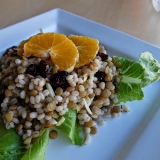
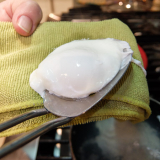
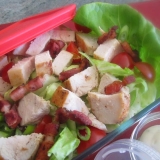

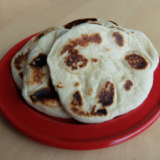

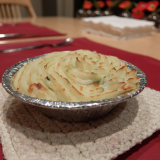
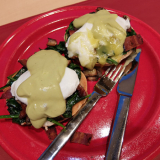

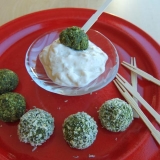

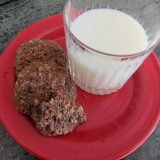

Leave A Comment